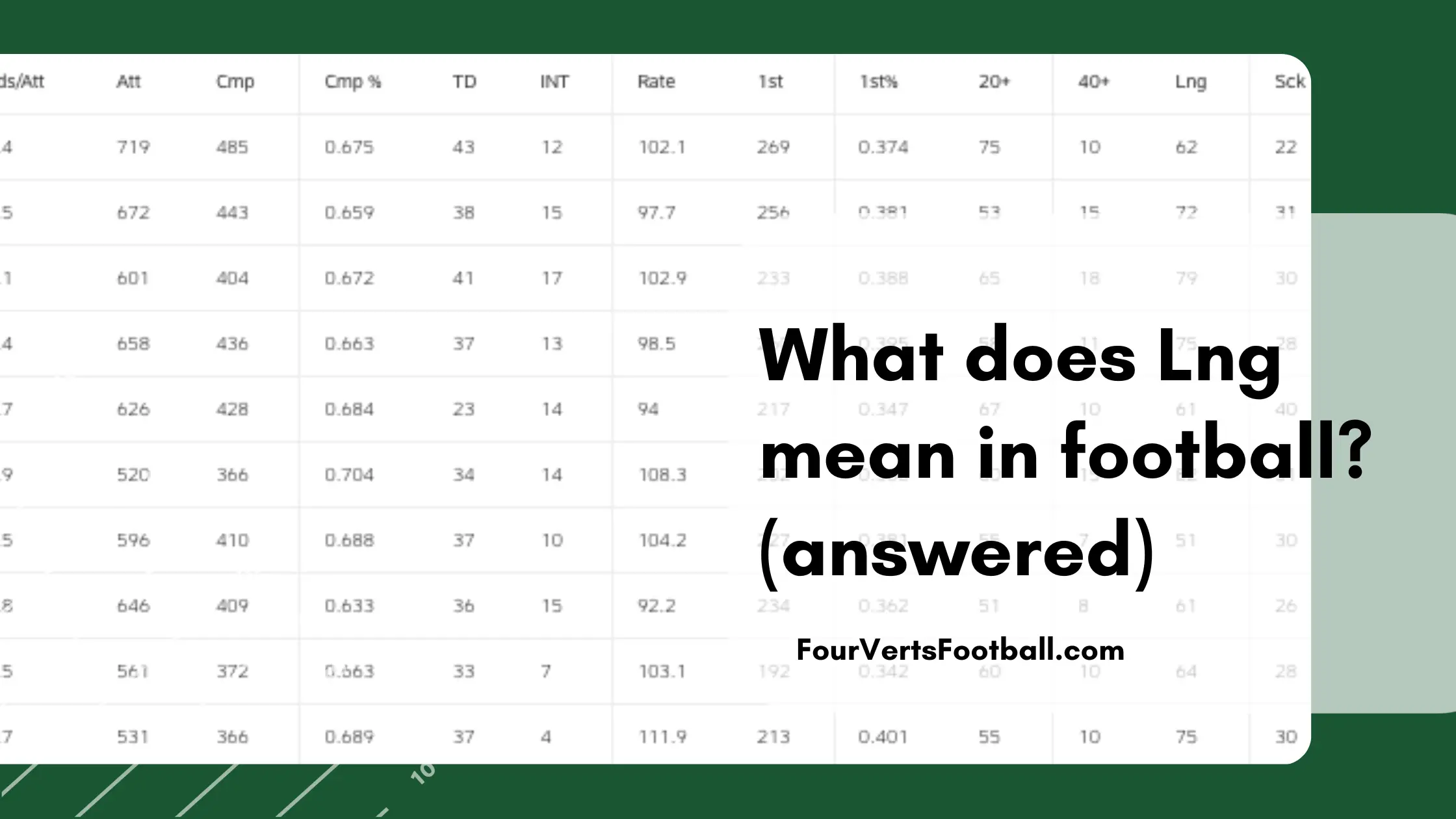The term LNG in football stands for longest. This statistic displays the longest rush, pass, reception, or return by a player.
To figure out what this statistic is referring to you are going to need to look at the position of the player.
If lng is in a quarterbacks stats this refers to the longest pass that was completed by the quarterback. Lng in a wide receiver stats is going to refer to the longest catch a wide receiver has made.
Runningbacks stats use lng to display the longest rush that a runningback had. And finally lng is also use in kick and punt returns to display the longest return a player had.
Lng in passing yards
Lng in passing yards is going to represent the longest pass that was completed by the quarterback. The yardage used in this statistic is how far the ball was advanced from the line of scrimmage in terms of passing yards.
This stat does not measure how far the quarterback threw the ball but rather how many yards were gained on the largest passing play.
If a quarterback threw a two-yard check down pass that resulted in a 99 yard touchdown this would still be displayed in the lng column as the quarterback’s longest pass.
Lng in rushing yards
The longest rush stat in football is usually collected on both quarterbacks and running backs.
Similar to passing this stat displays how many yards were gained from scrimmage on a rush. If the player was given the ball behind the line of scrimmage these yards are not included in the total.
Lng in receiving yards
In receiving yards long refers to the longest reception a player has had in that game or season. Again this stat is measure from the distance that is gained from the line of scrimmage.
It does not matter how many air yards or yards after the catch occurred on the play. To determine the longest reception they will use the passing play that gained to most yards from the line of scrimmage.
Punt and kick returns
One more position that will use the lng statistic is kick and punt returns. Usually, this statistic will have an average punt return as well as a long.
If a kick is caught outside the endzone the longest return is measured by how many yards were gained from the location in which they caught the ball.
If a ball is kicked into the endzone the return yardage is measured from the point in the endzone where they caught the ball as well.
With the depth of the endzone being roughly ten yards many players have had kick returns over 100 hundred yards.
How to use the LNG statistic
The LNG statistic is not the most useful in the game but it does help you understand a little more of what’s going on.
For example, say a receiver has 100 receiving yards in the first half. You may see this and think this player is dominating our team. But if you check the LNG stat and find this player had 95-yard reception you would realize it was just one bad play.
Conversely, if you see a receiver has 100 yards and his LNG is 10 yards that mean that player is cutting you up. The player would have to have at least ten receptions in order to put up those numbers.
This is just one example of how this statistic can be used to get a better understanding of the game.

